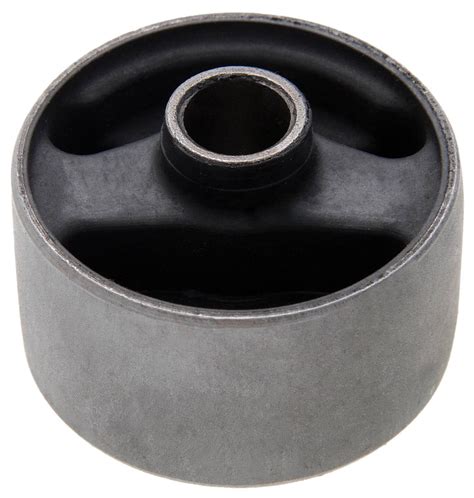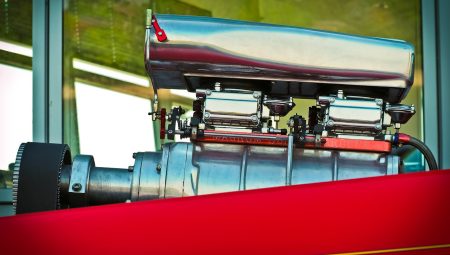Discover the role of engine mount bushings, signs of wear, their importance, replacement tips, and how to choose the right ones for your vehicle.In the world of automotive maintenance, engine mount bushings play a crucial yet often overlooked role in ensuring a smooth and efficient ride. These small but mighty components are designed to support the engine while absorbing vibrations and noise, enhancing both comfort and performance. However, like any part of your vehicle, they can wear out over time, leading to noticeable changes in driving dynamics. In this blog post, we’ll explore what engine mount bushings are, the signs that indicate they may be worn, and their overall importance. We’ll also discuss how to replace them and provide tips for choosing the right bushings to keep your engine safely and effectively anchored. Whether you’re a seasoned car enthusiast or a curious driver, understanding engine mount bushings is essential for maintaining your vehicle’s health.
What is an Engine Mount Bushing?
An engine mount bushing is an essential component in a vehicle’s design, primarily serving as a durable, flexible connection that secures the engine and transmission to the vehicle’s frame or chassis while simultaneously isolating vibrations and noise generated by the engine during operation.
These bushings are typically made from a combination of rubber and metal, and they are designed to absorb the engine’s movement and vibrations, which can vary significantly during acceleration or deceleration, thereby contributing to a smoother ride and overall improved driving experience.
Moreover, by firmly holding the engine in place yet allowing for a degree of flexibility, engine mount bushings play a crucial role in preventing unwanted wear and tear on both the engine and the surrounding parts, ensuring that the vehicle maintains its structural integrity and stays functionally sound, whic
Signs of Worn Engine Mount Bushings
Engine mount bushings are essential components of your vehicle’s engine support system, designed to absorb vibrations and reduce noise, but when they start to wear out, they can cause numerous signs that may indicate the need for immediate attention.
One of the most common signs of worn engine mount bushings is an increase in engine vibration that is felt inside the cabin, as you might notice that the engine feels more rough during acceleration or idling, resulting in an uncomfortable driving experience that can lead to further wear on other engine components.
Another critical indicator is unusual noises, such as clunking, banging, or even a persistent knocking sound when accelerating or decelerating; these noises often arise due to the engine moving excessively due to the deterioration of the bushings, highlighting the importance of keeping an ear out for irregular sounds while driving.
Additionally, one should pay attention to any misalignment issues with the vehicle’s components, such as the transmission or the drive shafts, as worn engine mount bushings can potentially lead to these parts being out of place, which can result in uneven tire wear and affect the overall safety and handling of the vehicle.
It is also advisable to regularly check for visible signs of wear or damage, as cracked or broken bushings can often be seen when looking under the hood, which serves as a clear warning that the bushings need to be replaced to avoid more extensive damage to the engine and surrounding components.
Importance of Engine Mount Bushings
Engine mount bushings serve an incredibly vital role in the overall functionality and performance of a vehicle, as they are designed to support the engine and reduce vibrations transmitted to the frame of the vehicle, which not only enhances rider comfort but also prevents potential damage to other engine components.
Without the engine mount bushings, excessive vibrations can lead to premature wear and tear on various parts, which can cause imbalances and misalignments that adversely affect both the handling and the longevity of the vehicle, ultimately resulting in costly repairs and diminished safety.
Furthermore, having well-maintained engine mount bushings is crucial for maintaining optimal power transfer from the engine to the wheels, as worn or damaged bushings can lead to energy loss and decreased fuel efficiency, making it essential for vehicle owners and enthusiasts to regularly inspect and replace these components to ensure ongoing reliability and performance.
Replacing Engine Mount Bushings
Replacing engine mount bushings is an essential maintenance task that should not be overlooked by vehicle owners, as these small yet significant components play a crucial role in absorbing vibrations and minimizing noise, thereby ensuring a smoother and more comfortable ride; not only do they provide support to the engine, but they also help to maintain proper alignment, which is vital for the overall performance of the vehicle.
When you notice signs such as increased vibrations, engine misalignment, or unusual noises during driving—that could indicate worn-out bushings, it becomes imperative to take action, as failing to address the issue in a timely manner can lead to further damage and possibly costly repairs down the line; therefore, inspecting and replacing engine mount bushings should be part of your regular vehicle maintenance routine to preserve the integrity of the engine support system.
To successfully replace the engine mount bushings, it is recommended to follow a systematic approach that includes gathering the necessary tools, such as a socket set, torque wrench, and a jack, in addition to consulting your vehicle’s service manual for the specific instructions, as the procedure may vary depending on the make and model, but generally involves lifting the engine with a jack, removing the old bushings, and installing the new ones while ensuring all bolts are tightened to the manufacturer’s specifications.
Choosing the Right Engine Mount Bushings
When it comes to maintaining your vehicle’s performance and ensuring a smooth driving experience, selecting the right engine mount bushings is crucial, as these small yet significant components play a vital role in isolating engine vibrations and providing stability.
Firstly, it’s essential to consider the material from which the engine mount bushings are made; options such as rubber, polyurethane, and hydraulic variants each come with their own set of benefits and drawbacks, which can significantly affect the handling characteristics of your vehicle, making a careful evaluation of driving style and conditions necessary when making your choice.
Furthermore, choosing the appropriate size and specification is equally important, as the engine mount bushings must perfectly match your vehicle’s specifications to ensure proper fitment and functionality; thus, referring to the manufacturer’s guidelines or consulting with a knowledgeable professional can aid in making an informed decision that ul
Frequently Asked Questions
What is an engine mount bushing?
An engine mount bushing is a component that connects the engine to the vehicle’s frame, providing stability and absorbing vibrations.
How do I know if my engine mount bushing needs to be replaced?
Signs that the engine mount bushing needs replacement include excessive engine vibrations, unusual noises when accelerating, or visible cracks or damage to the bushing itself.
What are the symptoms of a bad engine mount bushing?
Symptoms of a bad engine mount bushing include increased engine movement, clunking sounds during gear shifts, and issues with overall vehicle handling.
Can I drive my car with a bad engine mount bushing?
While it’s technically possible to drive with a bad engine mount bushing, it is not recommended as it could lead to further damage to the engine and other components.
How often should engine mount bushings be inspected?
It’s advisable to inspect engine mount bushings during regular vehicle maintenance, typically every 30,000 to 50,000 miles or as recommended by the vehicle manufacturer.
What materials are engine mount bushings commonly made from?
Engine mount bushings are typically made from rubber or polyurethane, which provide flexibility and durability to absorb vibrations.
What is the cost of replacing engine mount bushings?
The cost of replacing engine mount bushings can vary widely depending on the vehicle make and model, but it typically ranges from $150 to $500, including parts and labor.





